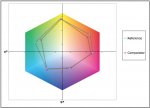Attempting a G7 calibration on a press and having trouble with the overprint colors, (red, green, blue). Ink supplier suggests changing sequence to KCYM. I am skeptical. Thoughts? I would really like to hear if anyone has tried this & your experiences. Has anyone profiled with varying sequences?














